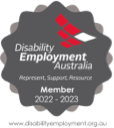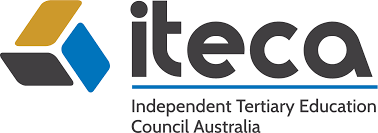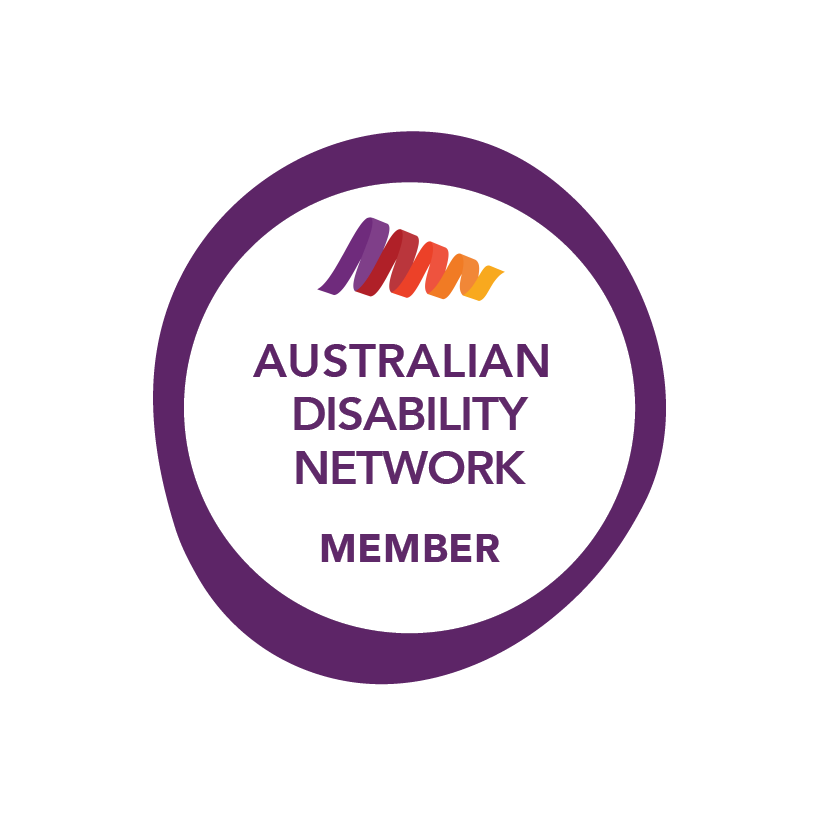At TURSA, we work with countless employers who have developed more inclusive work environments, and as such we know that understanding and supporting neurodiversity in the workplace has benefits for employees and employers alike. That’s because supporting neurodiversity fosters a culture of innovation and inclusion. By making simple adjustments and providing tailored support, workplaces can empower neurodivergent employees to thrive.
What Does Neurodivergent or Neurodiversity Mean?
Neurodivergence describes differences in cognitive functioning that influence how individuals perceive, process, and respond to information. Examples include neurological conditions such as autism, ADHD, and dyslexia. Neurodiversity refers to the concept that these variations are natural parts of human diversity, recognising unique perspectives and abilities as integral to a healthy society. The term arose from efforts within the autistic community to challenge deficit-based views of the condition, emphasising acceptance and inclusion, and has since grown to incorporate a wider variety of neurological conditions.
The Benefits of Supporting Neurodiversity in the Workplace
People who are neurodiverse are far more likely to be unemployed than their neurotypical counterparts, despite the fact that many organisations benefit from including them in the workplace.
Interestingly, the unemployment rate for neurodivergent adults is estimated to be between 30-40%.
This is about three times higher than the rate for people with other disabilities and eight times higher than for neurotypical individuals.
Below, we list a few of the benefits we’ve seen time and time again in workplaces that are supportive of neurodivergent employees.
Innovation and Creativity
Neurodivergent employees often think in unique and unconventional ways, which can lead to fresh ideas and out of the box problem-solving approaches. Their ability to see patterns, identify inefficiencies, and innovate can be a significant competitive advantage.
Attention to Detail and Accuracy
Many neurodivergent individuals excel in roles that require deep focus, high levels of concentration, and precision. They are often skilled at tasks involving data analysis, software testing, and quality assurance.
Enhanced Problem-Solving Abilities
Diverse minds contribute to improved problem-solving within teams. Individuals with autism, for example, may approach challenges methodically, identifying root causes that others might overlook.
Improved Employee Retention and Engagement
Companies that actively support neurodiversity tend to see increased job satisfaction, loyalty, and retention rates. For example, Aspiritech, a company that specialises in user testing, employs autistic workers for quality assurance roles and boasts a 99% employee retention rate.
Tackling Skills Shortages
Many industries face talent shortages, particularly in STEM, cybersecurity, and data analytics. Neurodivergent workers often excel in these fields but are frequently overlooked due to traditional hiring processes.
Boosted Productivity and Performance
Studies show that companies that implement neurodiversity hiring programs, such as SAP and DXC Technology, report significant gains in productivity and performance. These programs also improve management practices, benefiting the organisation as a whole.
More Inclusive and Equitable Workplaces
Embracing neurodiversity fosters a culture of inclusion, which benefits all employees. Adjustments made to support neurodivergent workers—such as clearer communication and more flexible working conditions—often improve the work environment for everyone.
Strategies to Support Neurodiversity in the Workplace
Effectively supporting neurodivergent employees requires a combination of structural, cultural, and individual-level changes. Based on our experience of working with thousands of job seekers and employers over the years, here are some practical strategies that your organisation can implement to create a truly inclusive workplace.
1. Education and Awareness
Workplace education on neurodiversity should go beyond generic diversity training and focus on the specific needs, strengths, and challenges of neurodivergent employees.
How to Do It:
- Develop neurodiversity training for all employees. Include information on conditions like autism, ADHD, dyslexia, and dyspraxia. Focus on strengths as well as workplace challenges.
- Train managers on inclusive leadership. Provide tools to help them adjust communication styles, offer accommodations, and support neurodivergent employees without bias.
- Encourage senior leaders to share their experiences. When neurodivergent leaders or allies speak openly about neurodiversity, it fosters a culture of acceptance.
- Use case studies and real-life examples. Highlight successful neurodivergent employees and how workplace adjustments have benefited them.
2. Inclusive Hiring and Recruitment Practices
Traditional hiring practices often disadvantage neurodivergent candidates due to a reliance on social norms, rapid decision-making, and unstructured communication. Adjustments can make hiring more equitable.
How to Do It:
- Modify interviews:
- Provide interview questions in advance to reduce anxiety and allow structured responses.
- Use skills-based or work-sample assessments instead of relying solely on conversational interviews.
- Allow for written responses or recorded answers instead of live questioning.
- Clarify job descriptions. Avoid vague phrases like “must be a team player” or “excellent communication skills” unless essential. Focus on actual job tasks.
- Partner with neurodivergent advocacy groups. Work with organisations like Autism Spectrum Australia or ADHD Australia to recruit candidates.
- Adjust onboarding processes. Provide detailed, step-by-step guides on workplace expectations and available support.
3. Workplace Adjustments and Accommodations
Simple workplace adjustments can significantly improve comfort, focus, and productivity for neurodivergent employees.
How to Do It:
- Create sensory-friendly environments:
- Offer noise-cancelling headphones or quiet workspaces.
- Reduce fluorescent lighting or allow alternative desk lamps.
- Provide flexible seating arrangements (e.g., enclosed spaces, standing desks).
- Adjust communication styles:
- Provide written instructions rather than verbal-only directions.
- Avoid figurative language or unclear expressions in workplace communication.
- Use bullet points, structured templates, and clear deadlines.
- Support flexible working arrangements:
- Offer remote work options for those who struggle with in-office distractions.
- Allow flexible start times to accommodate different energy levels throughout the day.
4. Leadership and Organisational Commitment
Senior leaders must actively support neurodiversity initiatives, ensuring policies are integrated into business goals and not just diversity checkboxes.
How to Do It:
- Assign executive sponsors for neurodiversity programs. A senior leader should champion neurodivergent inclusion and ensure accountability.
- Create a neurodiversity task force. Include neurodivergent employees in shaping workplace policies.
- Embed neurodiversity in corporate diversity, equity, and inclusion (DEI) policies. Make neurodivergent hiring and retention part of broader diversity efforts.
- Train managers to proactively support neurodivergent staff. Provide guidelines on flexible work arrangements, alternative communication methods, and structured feedback.
5. Employee Support Networks and Mentorship
Neurodivergent employees benefit from structured support systems, including peer mentorship and employee resource groups (ERGs).
How to Do It:
- Create neurodiverse employee networks:
- Establish peer-led support groups for neurodivergent employees.
- Provide dedicated funding and leadership backing for ERGs.
- Develop mentorship programs:
- Pair neurodivergent employees with experienced mentors who understand their needs.
- Allow reverse mentoring, where neurodivergent employees educate managers on best practices.
- Encourage open dialogue. Host regular forums where neurodivergent employees can share challenges and solutions.
6. Accessible Workplace Systems and Policies
HR policies, performance evaluations, and internal communications should be designed with neurodivergent employees in mind.
How to Do It:
- Revamp performance reviews:
- Use clear, structured feedback rather than open-ended assessments.
- Allow alternative performance evaluation methods, such as written reports or self-assessments.
- Improve HR system accessibility:
- Ensure online portals, forms, and training materials are designed with neurodivergent users in mind (e.g., avoid complex navigation).
- Provide assistive technologies like text-to-speech software for employees with dyslexia.
- Redesign workplace policies for clarity:
- Use plain language in company policies to avoid ambiguity.
- Offer multiple ways to report workplace issues, including written and verbal options.
- Implement structured workflows for requesting accommodations, ensuring employees know their options.
Legal Responsibilities
In Australia, organisations have legal obligations to ensure neurodivergent employees are not discriminated against and are provided with reasonable adjustments to support their work, should an employee need them. These obligations fall under the Disability Discrimination Act 1992 (DDA), which explicitly protects individuals with neurodivergent conditions, even if they do not personally identify as having a disability.
1. Protection from discrimination.
The DDA prohibits discrimination in employment based on disability, which includes neurodivergence. Employers cannot refuse to hire, promote, or unfairly treat an employee due to their neurodivergence.
2. Workplace Adjustments
Employers are legally required to make reasonable adjustments to accommodate neurodivergent employees unless it causes unjustifiable hardship to the business. This may include:
- Adjusted communication methods (e.g., written over verbal instructions)
- Flexible work arrangements (e.g., remote work, adjusted hours)
- Sensory accommodations (e.g., noise-cancelling headphones, quiet workspaces)
3. Disclosure and Privacy
Employees are not legally required to disclose their neurodivergence at work. Employers should ensure a safe environment where employees feel comfortable to disclose if they choose to, without risk of stigma or discrimination.
4. Inclusive Policies and Practices
HR policies and workplace systems must be accessible and designed to accommodate neurodivergent employees. Employers should:
- Use clear, plain language in workplace documents
- Provide multiple communication options for HR processes
- Ensure performance management frameworks focus on strengths-based assessments rather than rigid criteria that disadvantage neurodivergent employees
By complying with these legal responsibilities, organisations can foster an inclusive workplace while ensuring they meet their obligations under Australian anti-discrimination law.
Fostering Success Through Workplace Neurodiversity
At TURSA, we are proud to support neurodiversity in employment. Whether you’re a job seeker looking for a workplace that values your strengths or an employer eager to embrace inclusivity, we’re here to help.
To truly excel in creating an inclusive and accessible workplace, partnering with a job service provider like TURSA can make all the difference. By working with TURSA, you gain access to a partner that understands the intricacies of fostering inclusivity and accessibility, so connect with us today to learn more about our tailored support and resources.
















